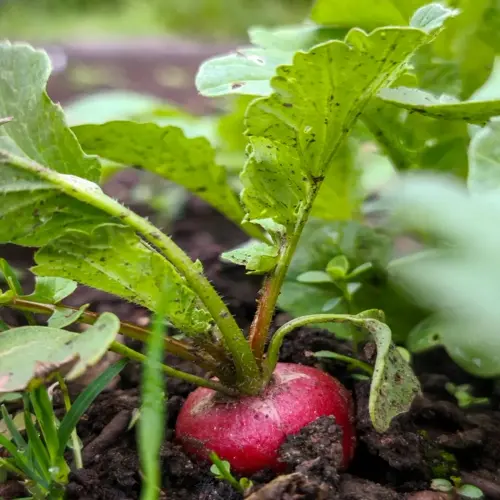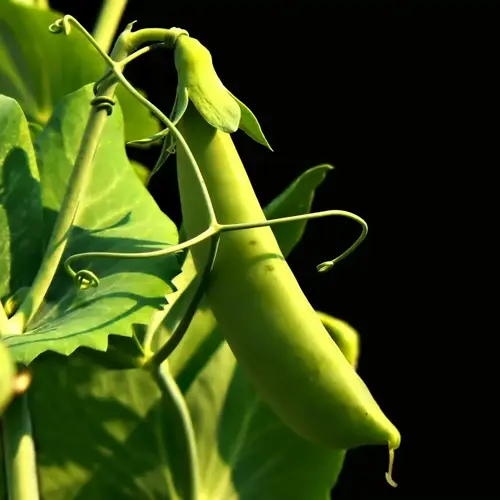When to Prune Lavender for Best Results

Written by
Liu Xiaohui
Reviewed by
Prof. Samuel Fitzgerald, Ph.D.In early spring, when new buds develop above the woody stems, prune lavender.
Deadhead fading blooms throughout the summer as they transition out of peak flowering, but keep in mind that deadheading from spring blooms will promote new flowers and growth.
Do not prune in fall, to avoid frost problems with the new cuts.
Do not prune during winter when the plants are dormant and most susceptible to damage.
English lavender should receive a more severe prune during spring, French types will only require a light shape.
Use bypass secateurs to make cuts that are clean, and at a 45° angle with little collateral damage to the plant that can heal quickly!
Article Navigation
The success of your garden relates to when to prune lavender. I learned this the hard way when I lost a couple of plants to a late prune. A precise time not only avoids woody stems but also promotes fresh growth. Your lavender will survive longer. And you get better-smelling flowers! If you prune at the wrong time, you will have weak and leggy plants.
I prune my lavender every year for its health. You should, too. Regular trimming helps avoid woodiness. It is a straightforward practice that contributes to plant longevity; I have kept mine for over 10 years. If you don't prune, it produces scant flowers, flimsy stems, and is very easily broken.
Pruning for Harvesting Flowers
Harvest your lavender flowers at optimal bloom in mid-summer. I always look for deep purple color and a good smell. Cut stems approximately 10 cm below the flower heads; this leaves you enough stem for tying the bundles you want. Choose dry mornings after the dew has dried.
To dry lavender, I use small bundles and hang them upside down to allow them to dry. I place the lavender in my shed where there is good airflow. Properly drying the lavender will keep the color much brighter. The flowers will bleach in direct sunlight. You want to keep the buds whole, as these easily crumble when fully dry.
Create homemade sachets with dried lavender for your drawers. I use it in cookies and teas. It pairs nicely with shortbread. Put what you don't use in jars with lids, and they will last at least a year. Share some with friends; who doesn't love lavender as a gift?
Aftercare Post-Pruning
Lightly water your lavender plants after pruning. I use about 1 cup for each plant. This minimizes root stress and prevents the plant from drowning. Do not thoroughly soak your lavender, as this can lead to root rot. Hold the substrate barely moist. Sandy substrates require watering every 3-4 days during hot weather.
Look for new shoots after 4 - 8 weeks. I mark on the calendar to remind myself to check progress. Healthy buds will appear silvery-green or green near the cut points. If you haven't seen growth in 10 weeks, there could be a problem. You can test for flexibility in the stems. If the stems are brittle and break, use a care plan. Take weekly photographs to document its progress toward recovery.
Before the winter commences, apply organic mulch around the base of the plant. I often use straw, packing mulch, or shredded bark as mulch. To adequately insulate, apply the mulch 2-3 inches thick. Gradually remove it in the spring when temperatures exceed 50°F. Do not use plastic covers to insulate either; moisture will become trapped, leading to rot or the plant's demise. If you are in a windy area, consider placing burlap screens around the plant to protect it from wind damage.
Watering Technique
- Lightly water soil immediately after pruning to reduce root stress
- Maintain soil moisture without saturation: 1 inch weekly in summer
- Avoid overhead watering to prevent fungal issues on cut stems
- For sandy soils: water every 3-4 days during dry spells
- In clay soils: water every 7-10 days to prevent waterlogging
- Use drip irrigation for precise moisture control at root level
New Growth Monitoring
- Check for emerging shoots 4-8 weeks post-pruning
- Healthy growth appears as silvery-green buds near cut points
- If no growth after 10 weeks, inspect stems for flexibility
- Measure growth rate: should be 1-2 inches monthly in summer
- Monitor for discoloration indicating nutrient deficiencies
- Document progress with weekly photos for comparison
Frost Protection
- Apply 2-3 inch organic mulch layer around plant base in winter
- Use straw or shredded bark to insulate roots from freezing
- Remove mulch gradually in spring when temperatures exceed 50°F (10°C)
- Cover plants with burlap during extreme cold snaps below 20°F (-7°C)
- Avoid plastic covers that trap moisture and cause rot
- Create windbreaks using burlap screens for exposed locations
Nutrient Management
- Apply balanced fertilizer (10-10-10) once in early spring
- Avoid high-nitrogen formulas that promote foliage over flowers
- For potted lavender: use slow-release granules every 3 months
- Test soil pH annually: maintain 6.5-7.5 for optimal growth
- Add compost tea monthly during active growing season
- Apply Epsom salt solution for magnesium boost if leaves yellow
Pest Inspection
- Examine stems weekly for aphids or spider mite infestations
- Treat infestations with neem oil spray applied at dawn
- Remove diseased stems completely to prevent spread to new growth
- Introduce ladybugs for natural aphid control in garden beds
- Set yellow sticky traps to monitor flying insect populations
- Apply diatomaceous earth around base to deter crawling pests
Tools for Pruning Success
Use your bypass secateurs as the main tool for pruning lavender. I prefer my Felco F-2 secateurs because they have a comfortable grip. They produce clean cuts that heal quickly. Do not use anvil pruners, as they crush the softer stem. Every cut must be precise. You will use your bypass secateurs most effectively if they are sharp.
Be sure to sanitize your blades with a 70% alcohol solution after every plant. I soak cotton pads in alcohol and wipe mine down. This helps to stop the disease from spreading between bushes. Bleach solutions work as well. Mix one part bleach to nine 9-parts water. Be sure to rinse the tools after use to prevent rust.
Hedge trimmers should never be used on lavender. I learned this the hard way. They rip apart the stems instead of making a nice, clean cut. Damaged wood is an invitation for insect pests or decay. That's why hand pruners will give you the most control. If you are pruning a larger hedge, then finish your shaping with secateurs. Your lavender plants will be healthier.
Bypass Secateurs
- Ideal for precision cuts on stems up to 1/2 inch thick
- Creates clean cuts that heal faster than anvil-type alternatives
- Felco F-2 model recommended for ergonomic grip and durability
- Sanitize with 70% alcohol solution between plants
- Sharpen blades monthly during active growing season
- Store in dry conditions to prevent rust formation
Gardening Gloves
- Select leather-palmed gloves for thorn protection
- Ensure snug fit to maintain dexterity while handling stems
- Machine-washable cotton blends prevent skin irritation
- Replace when palms develop wear holes or seams split
- Consider nitrile-coated options for wet weather gardening
- Disinfect after pruning diseased plants
Disinfectant Supplies
- Use 70% isopropyl alcohol for effective pathogen control
- Apply with cotton pads or spray bottle between each plant
- Bleach solution alternative: 1 part bleach to 9 parts water
- Rinse tools after bleach use to prevent corrosion damage
- Store solutions in dark containers to maintain potency
- Replace disinfectants every 2 weeks for maximum effectiveness
Sharpening Tools
- Diamond sharpening stones maintain optimal blade angle
- Hone blades using consistent 20-degree angle technique
- Test sharpness by cleanly slicing through paper edge
- Lubricate pivot points with light machine oil monthly
- Replace blades when nicks persist after sharpening
- Professional sharpening service recommended annually
Tool Maintenance Kit
- Include rust inhibitor spray for metal surfaces
- Store with silica gel packs to control moisture
- Use stiff-bristled brush for removing plant residue
- Apply lubricating oil to pivot points after cleaning
- Organize in ventilated toolbox to prevent corrosion
- Inspect springs and tension mechanisms quarterly
Step-by-Step Pruning Guide
Begin your spring pruning once you observe silvery-green buds forming on the plants. Personally, I usually start in late March for my younger plants. I recommend shortening them by up to one-third. For mature lavender, however, you will want to prune with a much lighter touch. Simply take off one-quarter of growth. This minimizes stress while stimulating the growth of bushy new stems at the base.
Before cutting any stems, make sure your tools are sanitized. I even wipe my secateurs with a 70% alcohol solution. Make angled cuts 45 degrees away from buds. First, remove stems that are too long. Take out crossing branches. Never cut below the lowest green growth. Shape plants to form a dome for even light coverage.
Create symmetry by trimming the central stems shorter than the outside ones. I will step back every few cuts to check. Dispose of any infected wood immediately in sealed bags. A healthy lavender plant will show a new growth shoot within three weeks. Don't worry about any uneven areas until next season.
Spring Preparation
- Inspect plants for winter damage: remove blackened/brittle stems
- Sanitize bypass secateurs with 70% isopropyl alcohol solution
- Identify new growth points: look for silvery-green buds
- Cut above leaf nodes: maintain 1-2 inch green growth above wood
- Shape young plants: remove up to 1/3 height for bushy base
- Trim mature plants: cut back only 1/4 height to avoid stress
Spring Cutting Technique
- Make angled cuts 45° away from bud direction
- Prioritize leggy stems: cut to lower branching points
- Remove crossing branches to improve air circulation
- Avoid cutting below lowest visible green growth points
- Create dome shape: shorter center, longer outer stems
- Dispose diseased stems immediately in sealed bags
Summer Timing
- Prune when blooms fade to gray: typically late July-August
- Choose dry mornings after dew evaporates completely
- Avoid pruning during heat waves above 90°F (32°C)
- Postpone if rain forecasted within 48 hours of cutting
- Check for active bees: delay if pollinators present
- Complete pruning by early September in cold zones
Summer Rejuvenation
- Cut spent flower stalks 2-3 inches below base
- Reduce height by 1/3 to 1/2 depending on plant vigor
- Target woody areas: cut just above visible new buds
- Leave 2-3 sets of leaves on each stem after cutting
- Use hedge shears only for light shaping of large hedges
- Make final secateur cuts for precise sculpting
Post-Pruning Evaluation
- Check cuts for smooth edges: recut jagged wounds
- Apply fungicide paste to large cuts over 1/2 inch diameter
- Water lightly: 1 gallon per plant if soil is dry
- Document before/after photos for growth tracking
- Monitor for new shoots: should emerge within 3 weeks
- Note uneven areas for correction in next season
Best Times to Prune Lavender
In early spring, about March, cut back English lavender hard, up to one-third cut from growth. French lavender requires light summer pruning after bloom. I learned this after losing the French plants to spring cultivation. The tender new stems cannot tolerate harsh pruning.
Time pruning when temperatures are at or above 45°F (7°C). In colder zones such as Minnesota, wait for the end of April. In the south, start pruning in February. I take a reading to gauge temperatures before making any cuts. Frost does harm to freshly cut. Temperatures should not exceed 90°F (32°C), as heat is stressful for plants.
Pruning late can cause winter dieback in plants. I had plants die from cuts that I made in October. Frost can get into fresh cuts. They will kill stems from inside the stem. To avoid problems with winter dieback, finish summer pruning by the beginning of September for places north of Zone 6. Southern gardeners are good until October. The health of the plant is more important than the date on the calendar.
5 Common Myths
Lavender should never be cut into the woody stems because it will kill the plant.
While cutting deep into bare wood can damage lavender, strategic pruning above dormant buds on woody sections actually rejuvenates older plants. English lavender varieties tolerate hard pruning up to 2 inches above ground, stimulating new growth from latent buds that extends the plant's lifespan beyond 10 years when done correctly in spring.
Fall pruning gets lavender ready for winter by cutting out extra growth that would freeze.
Pruning takes place within 6 weeks of frost, causes fresh cuts to freeze while damaging vascular tissues, and greatly increases mortality during winter. The only safe option is to prune all plants by early to mid-September so that cuts can callous before the cold. Light shaping in mild climates is still risky and unnecessary to keep plants healthy.
Lavender is a low-maintenance plant that doesn't require regular pruning to thrive.
Neglecting annual pruning causes irreversible woodiness within a few years, reducing bloom production and creating unsightly gaps. Unpruned lavender stems become brittle and snap under snow load, while weakened root systems make plants susceptible to rot diseases that can significantly shorten their lifespan.
Hedge trimmers are just as effective as hand pruners when creating the shape of lavender bushes.
Mechanical trimmers generally crush stems instead of making clean cuts, creating jagged, open wounds that expose the plant to harmful pathogens while damaging buds nearby. Utilizing bypass secateurs ensures that cuts are precise and at a 45 angle for quick healing, while trimming wounds can cause dieback that travels 4-6 inches down stems as well as damage needed to removed stems entirely.
All lavender varieties can be pruned the same way at the same times.
English lavender (Lavandula angustifolia) requires aggressive spring pruning and summer deadheading, while French varieties (Lavandula stoechas) suffer from hard cuts and need only light shaping after flowering. Hybrid lavandins demand moderate summer trimming, and Spanish types die if pruned before late spring due to different growth patterns.
Conclusion
Annual trimming will keep your lavender plants going for years. I've kept the same plants for over ten years through regular maintenance. Pruning in the spring and deadheading in the summer develop solid growth patterns. This cycle does not allow woody stems to grow. Your plants remain vigorous and healthy year after year.
Always ensure you have bypass secateurs for clean cuts. This is something I learned after ruining plants because I didn't have the right tools. Also, be sure to clean the blades to prevent the spread of disease to your bushes. Angled cuts heal more quickly, and your lavender will respond with vigorous growing. Having the proper tool makes maintenance easier and more effective.
When you prune properly, you can expect lots of blooms produced from your carefully maintained plants. This summer, my garden was filled with intoxicating fragrance. Healthy lavender also thrives from pollinators. Share cuttings, share dried flowers. The beauty and scent of lavender can elevate any home.
External Sources
Frequently Asked Questions
What is the best month to prune lavender?
Prune in early spring (March-April) when new buds emerge, and deadhead in summer (July-August) after blooming. Avoid fall pruning to prevent frost damage to fresh cuts.
How do you fix leggy lavender plants?
Cut back up to one-third of growth in spring, focusing on woody stems:
- Make cuts just above visible buds
- Shape into a dome for balanced growth
- Avoid cutting below lowest green growth points
Can lavender be pruned in October?
Never prune in October. Fall cuts won't heal before frost, causing stem damage and up to 70% winter mortality. Complete all trimming by early September in colder regions.
What happens if you cut into lavender's woody stems?
Strategic cuts above dormant buds rejuvenate plants, but deep cuts into bare wood kill stems. English varieties tolerate hard pruning; French types require gentle shaping to avoid dieback.
Is it safe to prune lavender with hedge trimmers?
Hedge trunners crush stems, inviting disease. Use bypass secateurs for clean 45° cuts that heal fast. Trimmed plants develop dieback spreading 4-6 inches down stems.
How often should lavender be watered after pruning?
Water lightly immediately after cutting to reduce root stress:
- Sandy soil: every 3-4 days in dry spells
- Clay soil: every 7-10 days
- Avoid overhead watering to prevent fungal issues
Will severely overgrown lavender recover after pruning?
Yes, if pruned over two seasons. Cut one-third in spring above buds, then another third next year. Avoid removing all growth at once to prevent plant shock.
What's the difference between pruning and deadheading lavender?
Pruning shapes plants and removes woody growth in spring, while deadheading trims spent blooms in summer. Both stimulate growth but serve different purposes for plant health.
Can you prune lavender in winter?
Never prune in winter. Dormant plants can't heal cuts, leading to frost damage and disease. Wait until early spring when buds show silver-green growth.
How does pruning extend lavender's lifespan?
Annual pruning prevents woodiness, boosting blooms by 50% and strengthening stems against snow. Unpruned plants rarely survive beyond 5 years, while maintained ones thrive over 10 years.

